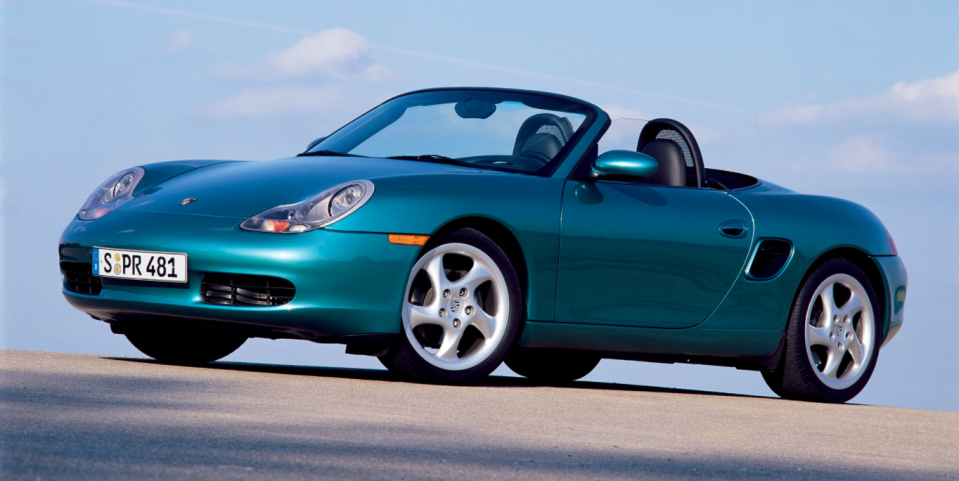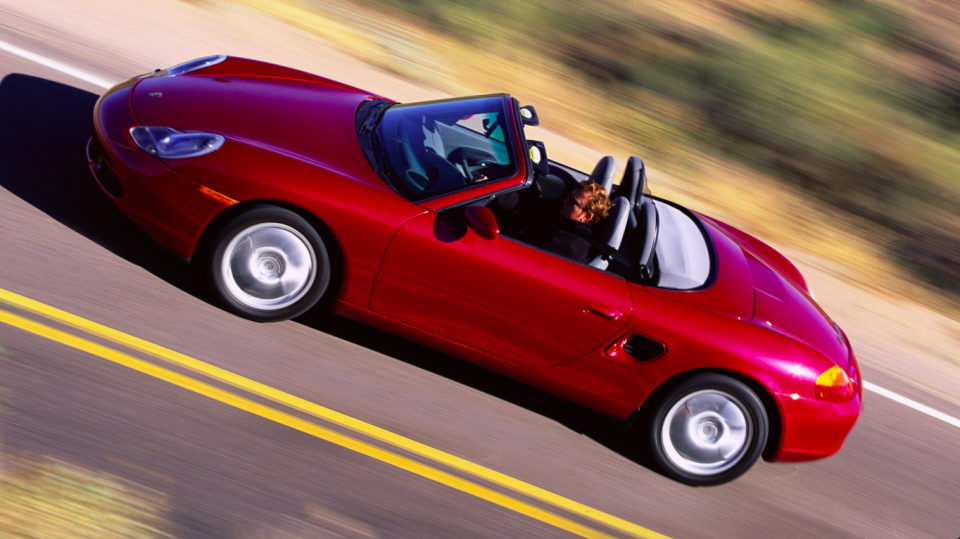Everything You Need to Know Before Buying a First-Gen Porsche Boxster

If you want to own a modern Porsche on the cheap, a 986-generation Boxster is the way to go. Introduced as an entry-level alternative to the 911 in the late Nineties, the first generation of the line came exclusively as a convertible that delivered plenty of smiles. Nowadays, prices are surprisingly reasonable, to the point that you can compare them with Miatas of the same vintage.
Convinced the first-gen Boxster is the car for you? Awesome. Here’s how to pick the right one.
The Car that Saved Porsche
The Boxster was initially unveiled as a concept in 1993 at the Detroit Auto Show, before going on sale in the summer of 1996. Though its 550 Spyder-inspired looks aren’t for everyone, the car was popular enough to save the company from bankruptcy, selling over 120,000 units throughout its eight-year production run. Hence the now-affordable used prices.

The first 986-generation Boxsters to reach U.S. shores were 1997 model-year base cars, equipped with a mid-mounted 2.5-liter naturally aspirated flat-six. Thanks to dual overhead cams, four valves per cylinder, and a dry-sump lubrication system, the engine was able to make 201 horsepower and 181 lb-ft of torque, with a redline of 6700 rpm. Sending power to the rear wheels is a five-speed manual transmission or an optional five-speed Tiptronic automatic. The 0-60 sprint happens in 6.1 seconds, and top speed is 149 mph. With a curb weight just under 2800 pounds, it’s almost guaranteed to put a smile on your face.
The car received a significant update in 1999 for the 2000 model year, with a bigger base engine, tuned intake runners, and a more powerful S model. Following customer feedback, the base 2.5-liter flat-six was enlarged to 2.7 liters, resulting in an increase of 16 horsepower and 11 lb-ft of torque. The S model got a 3.2-liter naturally aspirated flat-six making 250 horsepower and 225 lb-ft of torque, as well as a six-speed manual gearbox, bigger cross-drilled brakes from the 996, Carrera wheels, upgraded suspension components, a third radiator up front, and a dual-exit exhaust. It has a higher 7200-rpm redline, and was able to sprint to 60 mph in 5.2 seconds when new.
In order to fend off increasing competition from the Mercedes-Benz SLK and BMW Z3, the 986 received yet another refresh from Porsche in 2003. Output from the base 2.7-liter car grew to 225 horsepower, while torque remained the same at 192 lb-ft. The S model’s engine saw a slight increase in performance as well, with gains of eight horsepower and four lb-ft of torque. For 2003, the base car got the S’s shocks and springs, while the S got bigger sway bars.

For the 986’s final model year, 2004, Porsche introduced the 550 Spyder 50th Anniversary edition Boxster, based on the S model. The most powerful first-gen Boxster produced, it made 264 horsepower from its 3.2-liter flat-six. Other upgrades include a short-throw shifter, a bespoke exhaust, a 10-millimeter lower suspension, and a five-millimeter wider track. All 50th Anniversary cars were painted in GT Silver Metallic, with a cocoa brown leather interior and brown soft top. Only 1953 examples—reflecting the year of the 550 Spyder's debut—were built, and only 500 were sold in America.
So Which One Is Right for Me?
The best 986 for you depends heavily on how much you want to spend. Depending on year, mileage, trim, and condition, prices can range anywhere from $5000 for early, well-used base cars to $30,000 for perfectly kept final-year examples.
If a low entry price is a priority, you’ll have to resign yourself to a Boxster built between 1997 and 1999. These early cars are by far the cheapest on the used market, with prices hovering under the $10,000 mark. For what you’re getting—a mid-engine Porsche convertible with a flat-six engine making over 200 horsepower—that’s not so bad. Early reviews of the car praised its handling prowess, but many felt the car was underpowered.

 Yahoo Autos
Yahoo Autos 